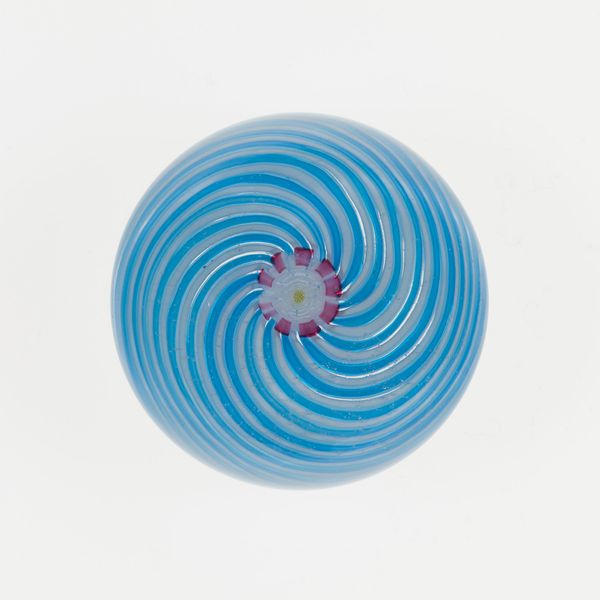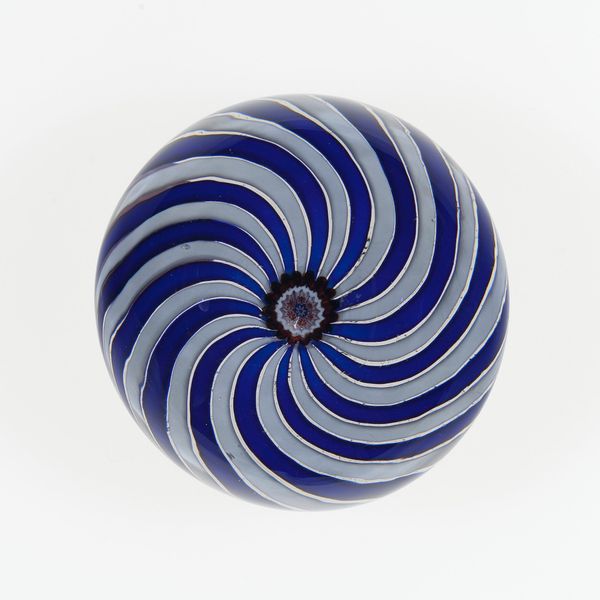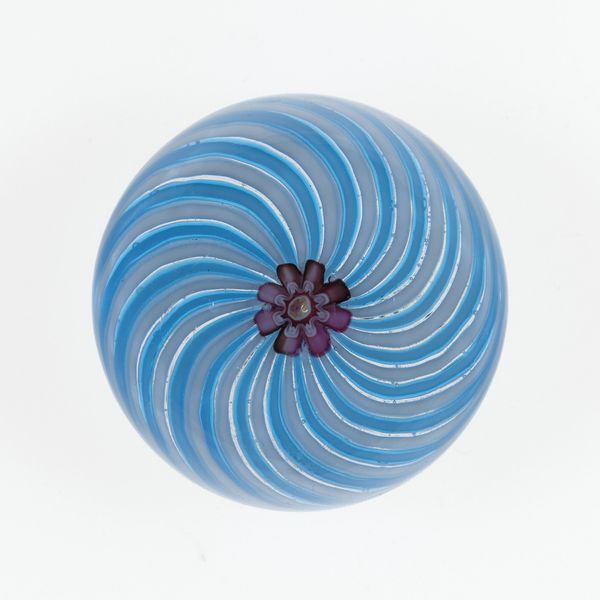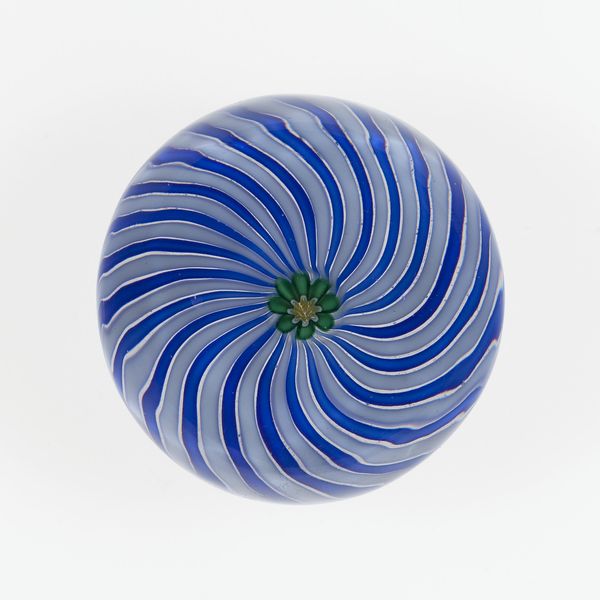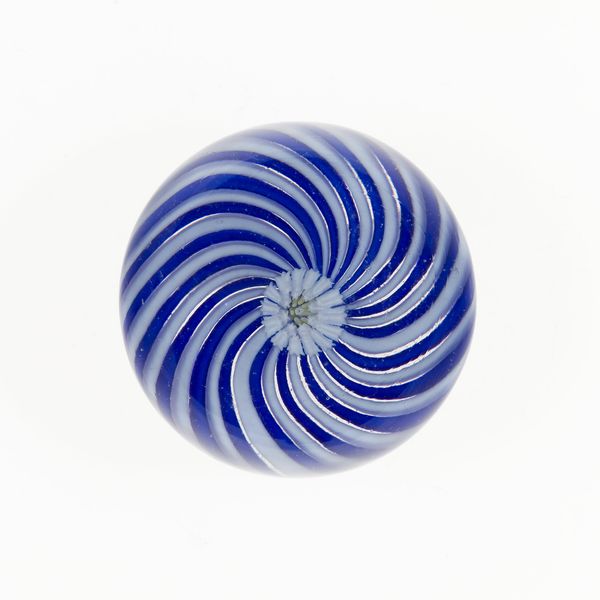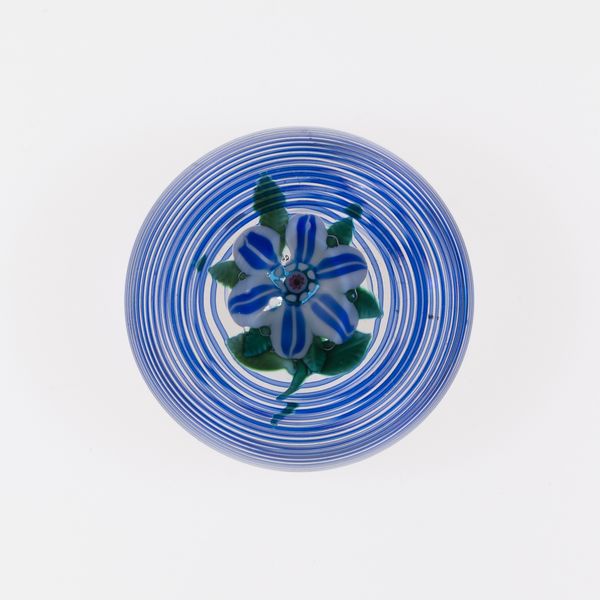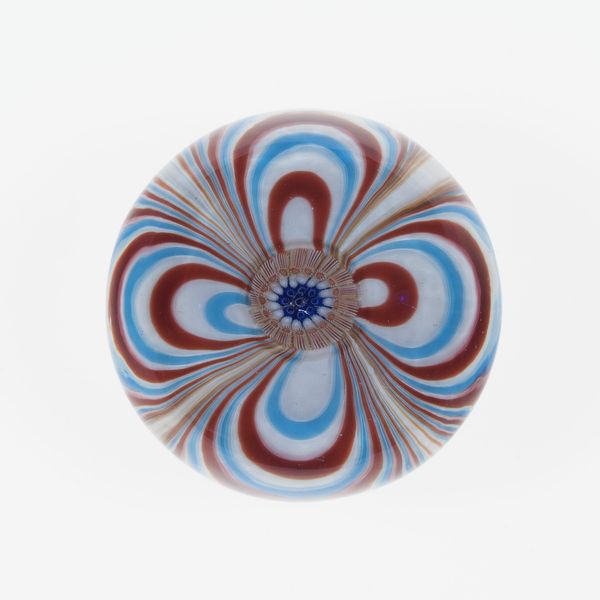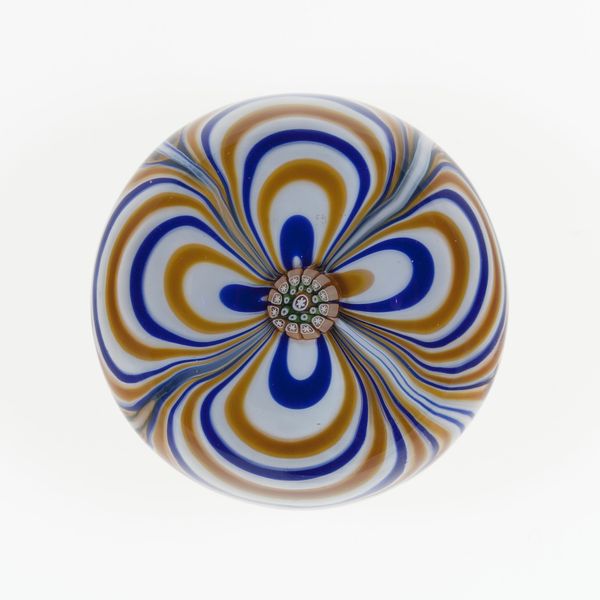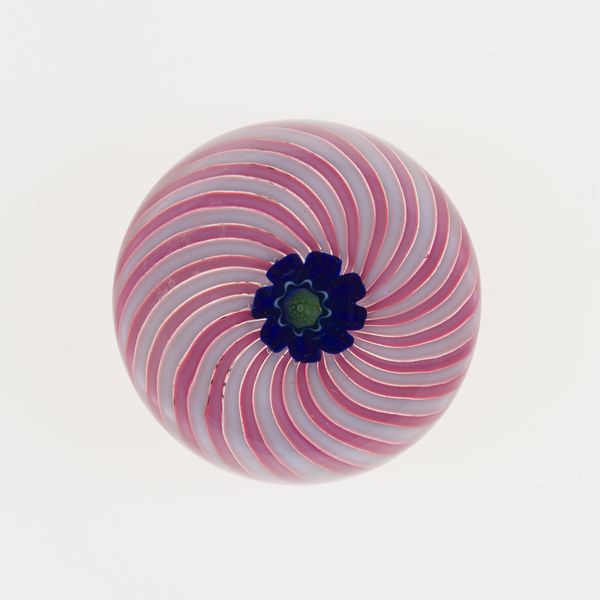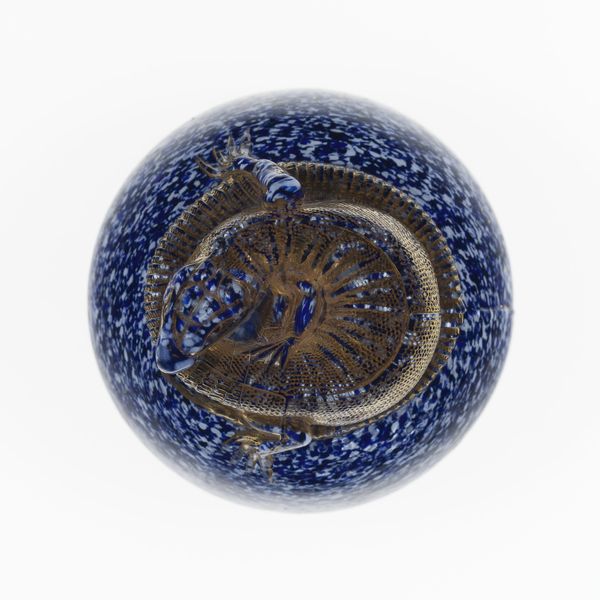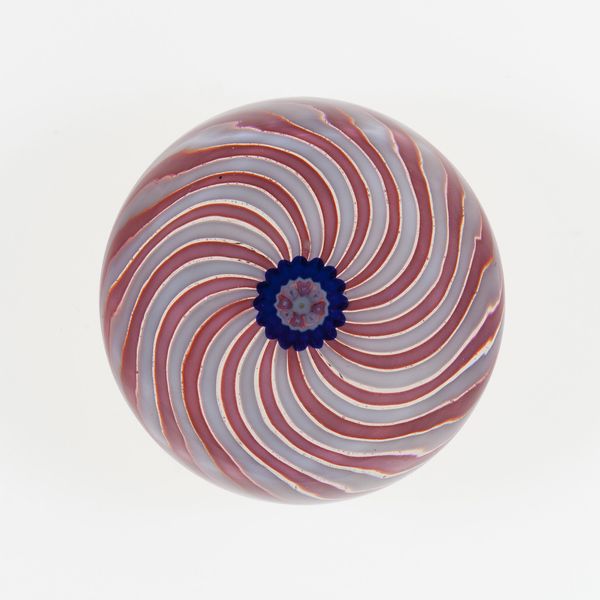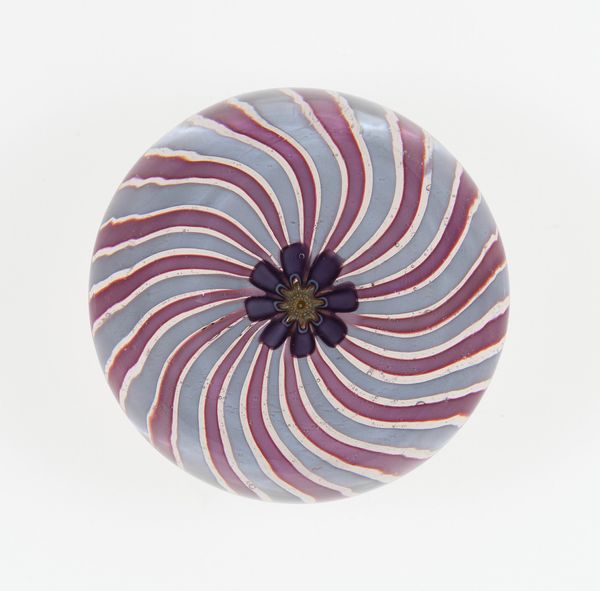
ceramic, paper, glass
clear focal point
clear graphic shape
shape in negative space
circular oval feature
ceramic
round design
paper
glass
circular focus
geometric
white focal point
france
artificial colours
centered
decorative-art
concentric circle
Dimensions: 8.9 × 4.5 cm (3 1/2 × 1 3/4 in.)
Copyright: Public Domain
Curator: Well, here’s an intriguing object—a glass vase, likely crafted in France by the Compagnie de Saint Louis, sometime between 1845 and 1860. The piece currently resides at the Art Institute of Chicago. Editor: My immediate thought is peppermint! It's this swirling vortex of blue and white. It reminds me of those old-fashioned candies. Clean, crisp, but also dizzying—there’s something slightly unsettling about the unending spiral. Curator: The spiral motif itself carries significant symbolic weight. Think about ancient civilizations, where the spiral represented growth, evolution, and the journey of life. This form is also linked to water, which represents subconscious drives and mystery. Do you feel the effect of those layered connections here? Editor: I think I can perceive those deeper meanings you mention, but also, it has this sort of hypnotic quality. You almost expect it to start moving, like one of those optical illusions. It sort of invites you to lose yourself in it. It might not even matter what the symbols are. Maybe it is just, "lose yourself." Curator: Exactly! The circular form can symbolize totality, wholeness, but the repetitive pattern might be also designed for a sense of containment. The object has the ability to hold contents, which relates it further to its symbolic content of holding things inside ourselves. Editor: That's beautifully put. A decorative vessel acting as an intimate reflection... the artist’s or our own. Makes you wonder what secrets it’s holding, right? Curator: Indeed! And that speaks to the vase’s power beyond its utility as a functional item. It's a window into the Victorian fascination with form and the psychological appeal of swirling symmetry, while its emptiness and the absence of color create a vacuum, filling the space only with an artificial geometry of sorts. Editor: Yeah, in this way it reflects an empty vessel or the artist who once created the vessel—haunted, present and absent at once. Makes you want to bring it home, doesn’t it? Curator: Well, there's something to be said about living with well-designed history! Editor: For sure. And next time I get dizzy, maybe I'll just stare into a vase for answers. Thanks for peeling back a few of its many, swirly layers with me.
Comments
No comments
Be the first to comment and join the conversation on the ultimate creative platform.
